At the end of a dusty lane off a bustling highway in a Mumbai suburb, is a very ordinary looking apartment block. Soulful music wafts out of a window. But in a first-floor apartment something very unusual is happening.
Inside Aarifa Bhinderwala’s bright blue bedroom, there isn’t a bed, wardrobe, or table – just four shiny steel poles that stretch from floor to ceiling. Bhinderwala, 28, has been sleeping on a mattress in the living room for years.
From her bedroom, she practices and teaches the sport of pole dancing.
It’s a controversial occupation for a woman in India, which still has conservative values when it comes to gender norms.
But Bhinderwala says she isn’t out to shatter stereotypes or defy perceptions.
“I do it because I love it,” she says. “I am a hopeless romantic. Everything I do stems from love.”
Pole position
Bhinderwala’s love affair with pole dancing began three years ago while visiting her sister in Perth, Australia. She saw an advert for a pole dancing class and decided to try it.
“I liked the vibe of the class. The lights, the music, women from around the world, the high energy – it was like a party,” she says. “I found it fascinating.”
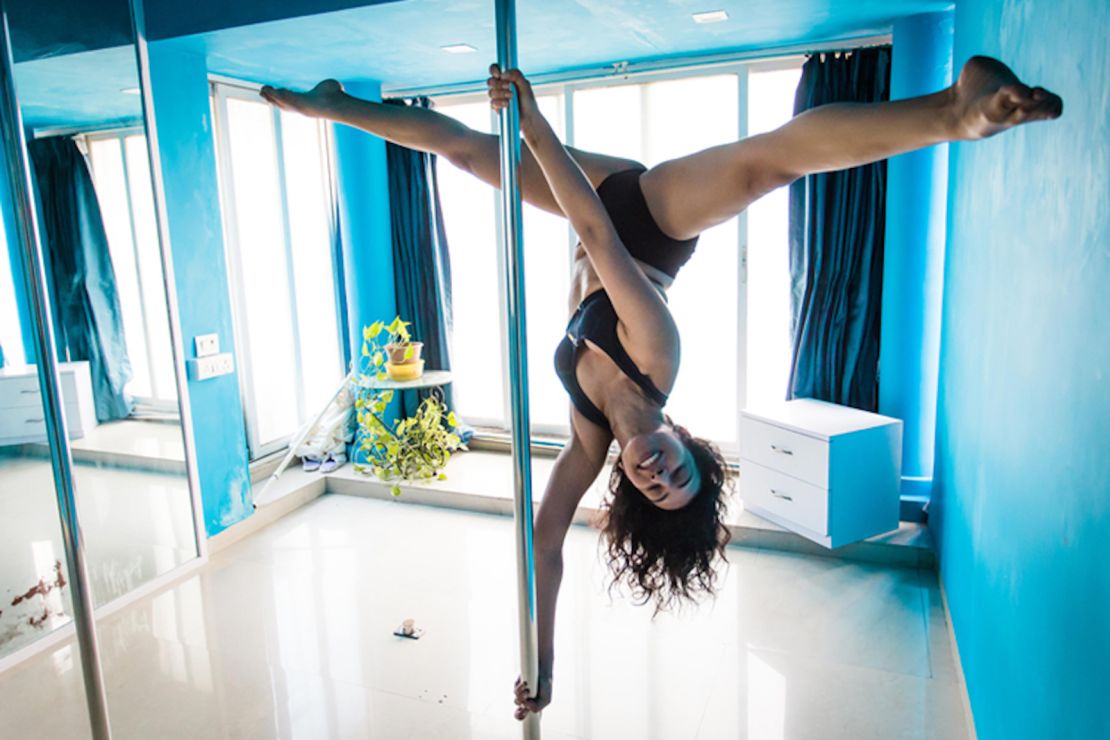
After a couple of weeks, she achieved her first inversion: an upside down dance position on the pole. Previously, she had never done a handstand.
For the next two-and-a-half years, while she completed her MA in sociology at Mumbai University, Bhinderwala shuttled between India and Australia, where she took pole dancing courses, eventually becoming an advanced-level pole dancer.
“Poling transformed the person inside me, both physically and mentally,” Bhinderwala tells CNN, in between showing off a range of acrobatic moves.
“It is uplifting, empowering and humbling,” says Bhinderwala. “It’s an incredible feeling when you learn to hold and control your own body weight in the air. You walk with a renewed self confidence.”
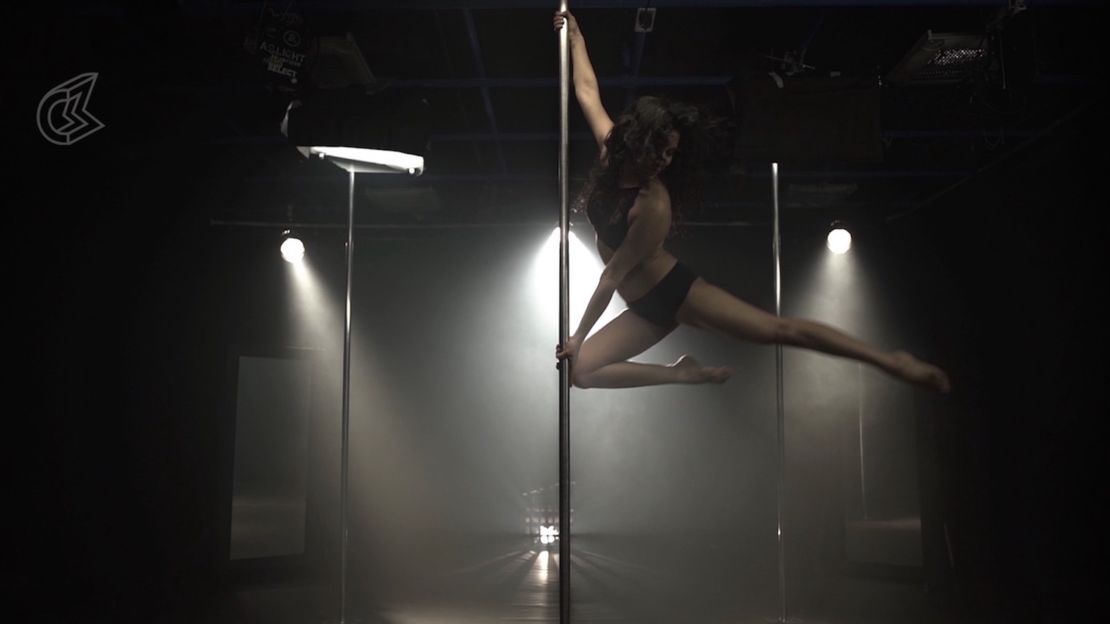
Bhinderwala started choreographing her own pole routines to a range of music – soul, jazz, old Hindi movie soundtracks. It became an art form.
Pole dancing in India
Although the origins of pole dancing can be traced back to the ancient Indian sport of mallakhamb, in which wrestlers train by performing gymnastics on wooden poles, pole dancing in most of the 20th century was associated with seedy night clubs.
Over the past two decades, however, pole – or vertical dance, as it’s also referred to – has evolved into a sport, providing a high intensity workout that develops core strength and requires extreme coordination.
Women, it seems, are taking back the pole and turning it into something positive.
In 2008, Katie Coates and Tim Trautman founded the UK-based International Pole Sports Federation (IPSF) and the organization set about standardizing rules, regulations, scoring systems, policies, and judges training. Today, there are more than 30 national pole championships, a world championship and a coaching and judging framework, according to the federation’s website.
In 2015, the IPSF says more than 2,500 athletes competed in 26 countries to qualify for the World Championships “with a growing number of men and children” taking part. The IPSF says its long-term goal is the inclusion of pole in international sporting events such as the Olympic Games.
Coates tells CNN that she’s never heard of anyone from India competing in pole.
“India is a huge demographic, we would be delighted if it caught on there,” she says.
In Mumbai – a city of at least 18.5 million people – CNN can only find evidence of two pole dancing studios. Bhinderwala operates one, and Shilpa Rane, 44, runs the other.
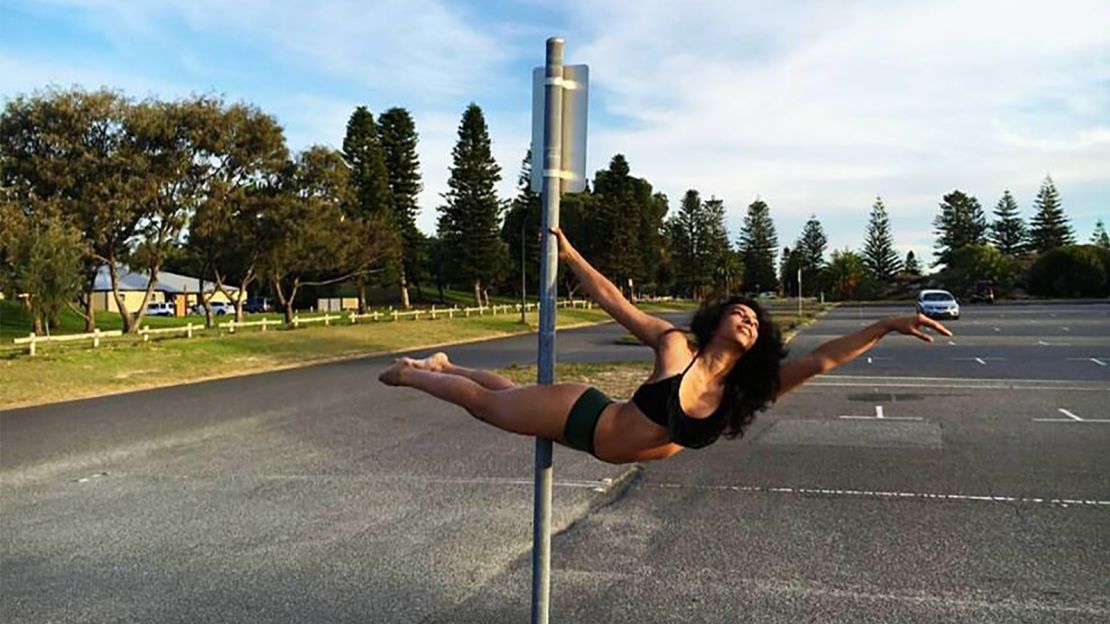
After training in pole dancing in the US and the UK, she was one of the first women to teach it in Mumbai in 2002. Back then, she says, the market was not ready for it.
“It was not considered something good girls did,” she tells CNN.
According to Rane, attitudes are changing. She says urban Indian women recognize pole dancing as a form of fitness and they are ready to embrace it.
Bhinderwala holds group classes three times a week and trains for two hours every day. She doesn’t advertise her classes – she says she doesn’t need to.
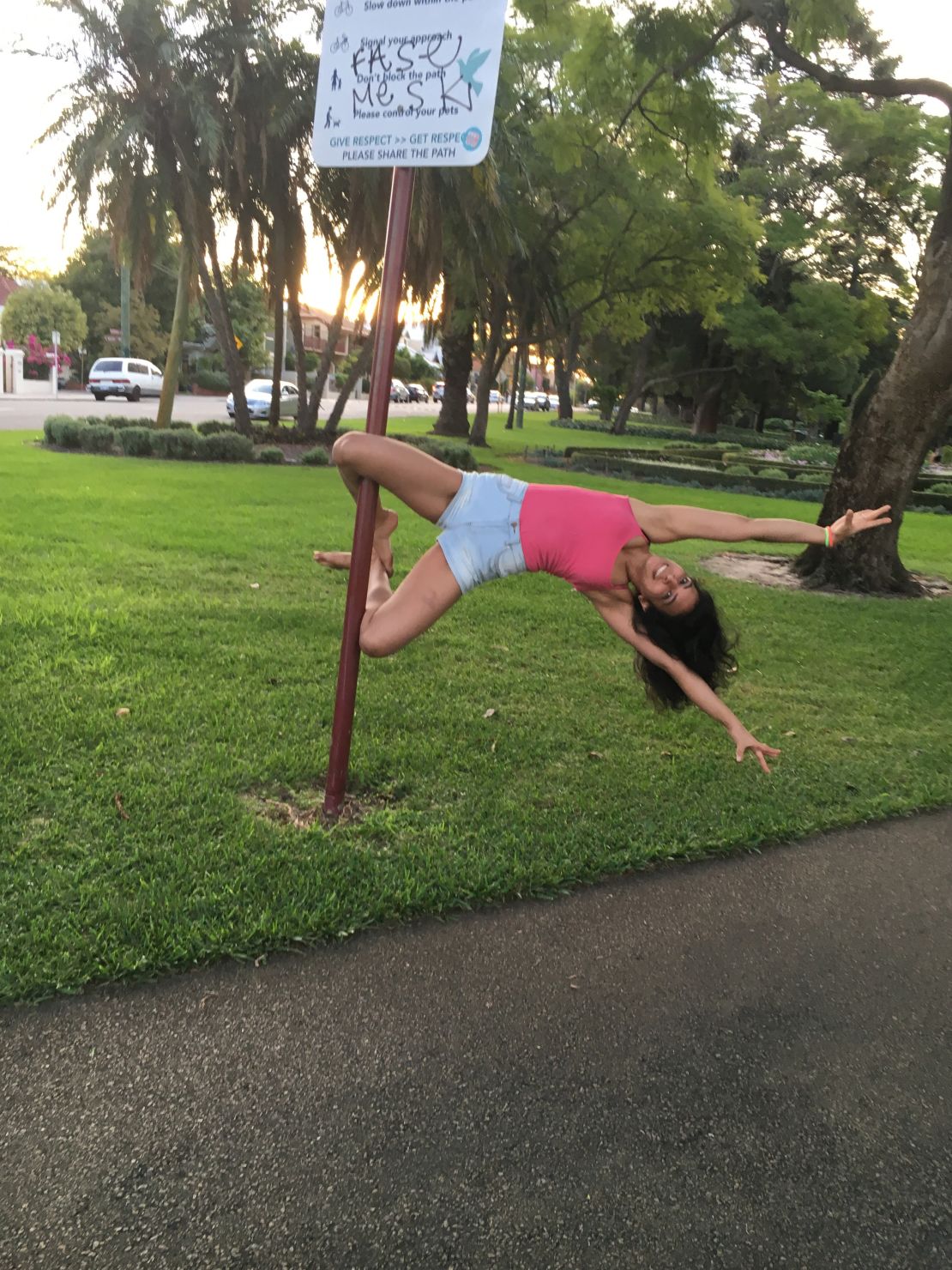
“Word of mouth is so strong,” she says, “Three students get another 10, those 10 get another 20, and my classes are full.”
An eclectic range of women attend, from businesswomen and doctors to homemakers and models. Their ages vary, too – Bhinderwala’s oldest student is 49 years old.
Going viral
Bhinderwala started to gain recognition in Mumbai when media company, Culture Machine, featured her journey on its digital channel for women, Blush.
In the video, Bhinderwala says: “Not every person who is fully covered is conservative and not every person who is wearing skimpier clothes is very broad minded.”
To date, it has been viewed over 1.3 million times.
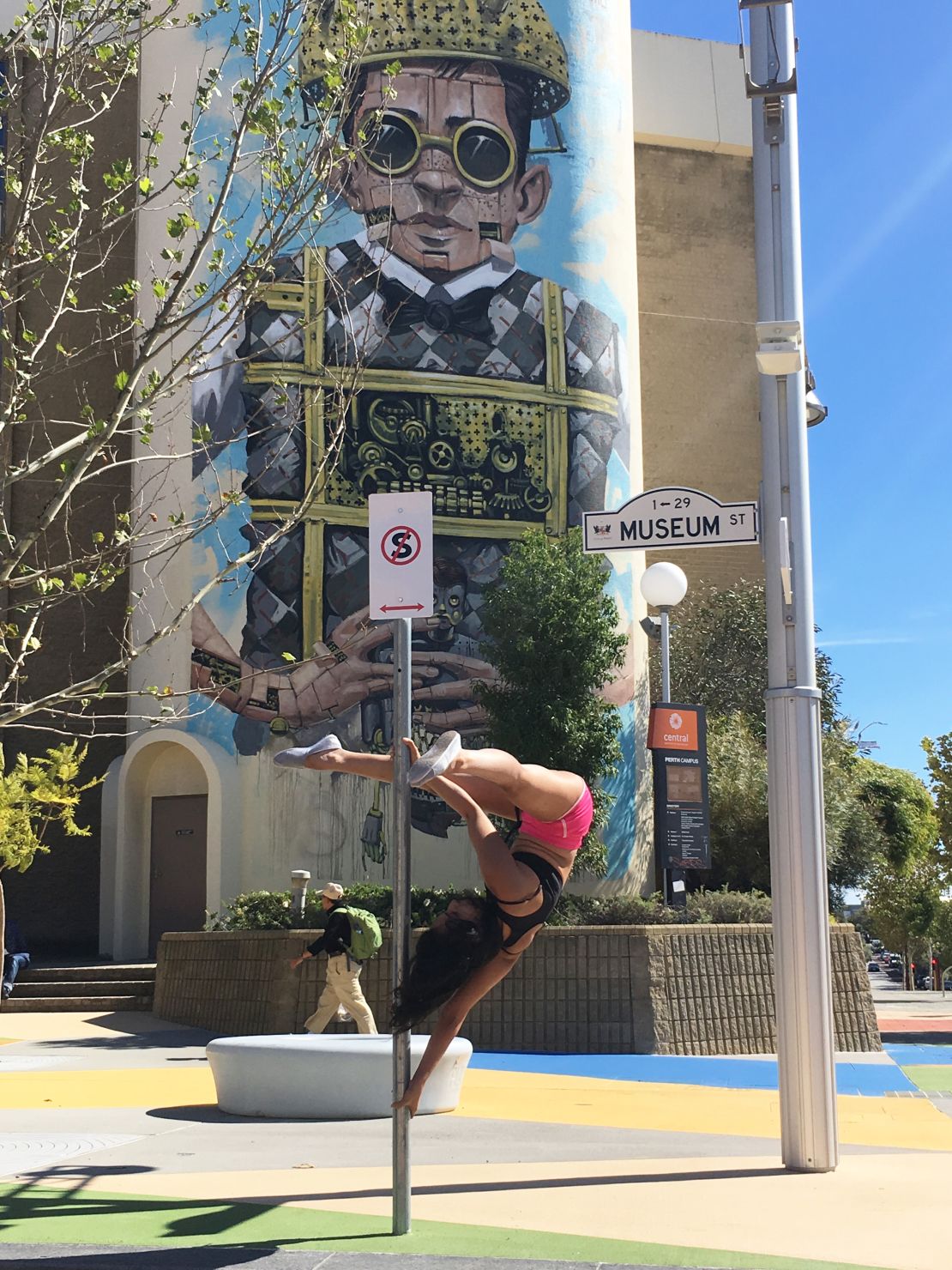
“We hope that (Bhinderwala) encourages women to express themselves in whatever way they desire and (inspires them to) not be bogged down by dogma,” says Akanksha Seda, creative and channel director at Blush.
Bhinderwala has certainly gained an audience.
On Instagram, she has nearly 6,000 followers to whom she regularly posts pictures and videos of herself performing complicated moves.
“I was expecting a lot of backlash,” she says. “Instead, people comment on my strength. They say: ‘This is so hard core, you are so strong.’”
Her biggest fan is her mother, Nafisa Bhinderwala, a retired school teacher.
“I am a proud mother when I see her on top of the pole, balancing on one limb and doing inverts and enjoying it all. The bruises and burns – she calls them her medals for nailing each move.”
Nafisa is aware of the negative association pole dancing has in India, but isn’t fazed.
“I am proud my daughter has chosen something different. She is breaking the myths about pole dancing and has all my support,” she tells CNN.
Men’s role on the pole
To help her sport become better recognized and respected, Bhinderwala wants to remove the hyper-sexuality associated with pole dancing.
One way to achieve that, she says, would be to get men to pole dance – although Bhinderwala has yet to have a man show up at one of her classes, she is working on a program that she hopes will appeal to men.
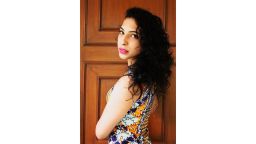
Bhinderwala hopes to eradicate the sport’s negative image.
Pole dancing is gradually becoming more popular among men on the international circuit. Thirty-five men registered to take part in the World Pole Sports Championships in Holland this year. In 2012, the first year a male category was introduced, only five men took part, according to Coates.
Bhinderwala says pole dancing has taught her lessons about perseverance, hard work, and forgiveness. And it’s not for the faint-hearted: the skin bruises and burns easily as it learns to master the sport.
“I respect my body so much,” Bhinderwala says. “I put it through so much. My body has taught me to forgive, because it forgives me.”


